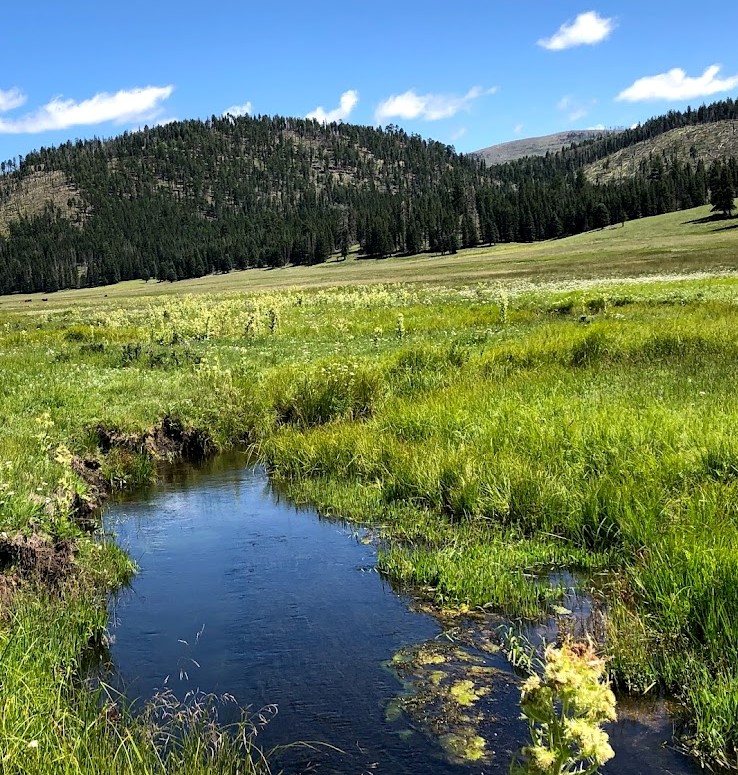Collision between two stars – a neutron star and a black hole.
The death of stars.
I watched the sun come up this morning over the Sandia mountains. Our sun is all gas, but in the center is compressed so much (4 trillion psi) that a teaspoon of it weighs 1.5 lb.
The nuclear process that gives it energy will stop and our sun will slowly die out without drama after a billion years or so and become a white dwarf.
Not so for a star a few times larger than our sun that will explode outward as a supernova, and the remainder will implode into a neutron star. It’s called this because the atoms of hydrogen, helium, and heavier elements are crushed down to the size of a nucleus (no more spinning electrons).
The implosion ends up as a giant nucleus, about the size of the earth, and the density is extremely high – one teaspoon weighs a billion tons. This little guy has an enormous force of gravity around it.
But it gets more incredible! If a star is ten times larger than our sun, at the end of its life the implosion crushes it down to a giant nucleus but doesn’t stop there – it keeps on crushing it down to a black hole where the gravity is so strong that other stars can be sucked in like a vacuum cleaner but nothing can escape, not even light waves and that’s why its black.
Star collisions.
I’ve written about gravity waves before. If two black holes collide the gravity forces are so disruptive that they create waves that spread out like ripples in a pond when a stone is dropped in.
About a hundred years ago, Einstein himself predicted that this might happen. Called gravity waves, these can travel perhaps a billion light years across the universe, and can be detected at earth (this actually means the collision took place a billion years ago and it took that long for the light to reach earth).
If two neutron starts collide, same thing – you get gravity waves that have also been detected at earth.

The new thing is a collision between a black hole and a neutron star, which was a surprise because scientists thought stars wouldn’t pair up like this.
It kind of changes the theory of stellar evolution, especially that fewer heavy chemical elements are produced when stars explode. And this has implications for the continuing growth of the universe, eventually including our sun and our planet.
How do you detect gravity waves?
Basically you build a long horizontal tunnel in the earth, and you measure its length by shooting a laser beam along the tunnel. The tunnel is about 2.5 miles long. The laser is so accurate it can detect if the length of the tunnel changes by the radius of an atom.
If a gravity wave hits the earth it will cause the tunnel to increase or decrease in length as it passes by. And the change may be just a few atoms in length.
Scientists use three different detectors in Washington State, Louisiana, and central Italy. This can help pinpoint the source of the collision. This collaboration, called ALIGO, entails 1300 scientists from 18 countries.
This writeup comes from a report by BBC.com.
++++++++++++++++++++++++++++++++
BLOG TOPICS: I write in-depth blogs about a mix of topics: Science and Energy, and Inspiration and Hope, and Health and Hiking.
+++++++++++++++++++++++++++++++++++++++++++++
The Gray Nomad ….. Let your mind wander and wonder at the immensity of the universe.
++++++++++++++++++++++++++++++++++++++++++++++++
The heavens declare the glory of God, and the firmament proclaims His handiwork.
Day after day pours forth speech, and night after night shows forth knowledge.
There is no speech nor spoken word [from the stars]… yet their voice [in evidence] goes out through all the earth, their sayings to the end of the world.
[Book of Psalms, chapter 19.]
Discover more from Ian Dexter Palmer Ph.D
Subscribe to get the latest posts sent to your email.

What wonderful scientific information shared in everyday language (that everyone can understand). Thank you, Ian!
I enjoyed reading this! Very well written! How do you distinguish the change in tunnel size is due to seismic activities or gravitational waves?
Thanks
Hi Alireza, at any one detector its more difficult, although I believe they have screening filters. But with three detectors across our world, I suppose a seismic wave isn’t significant at all three detectors, but the gravitational wave will be.
Ian… I very much enjoyed reading your blog on neutron stars colliding with a black hole and how this all takes place and how scientist can measure this event. A very blessed 4th to you.